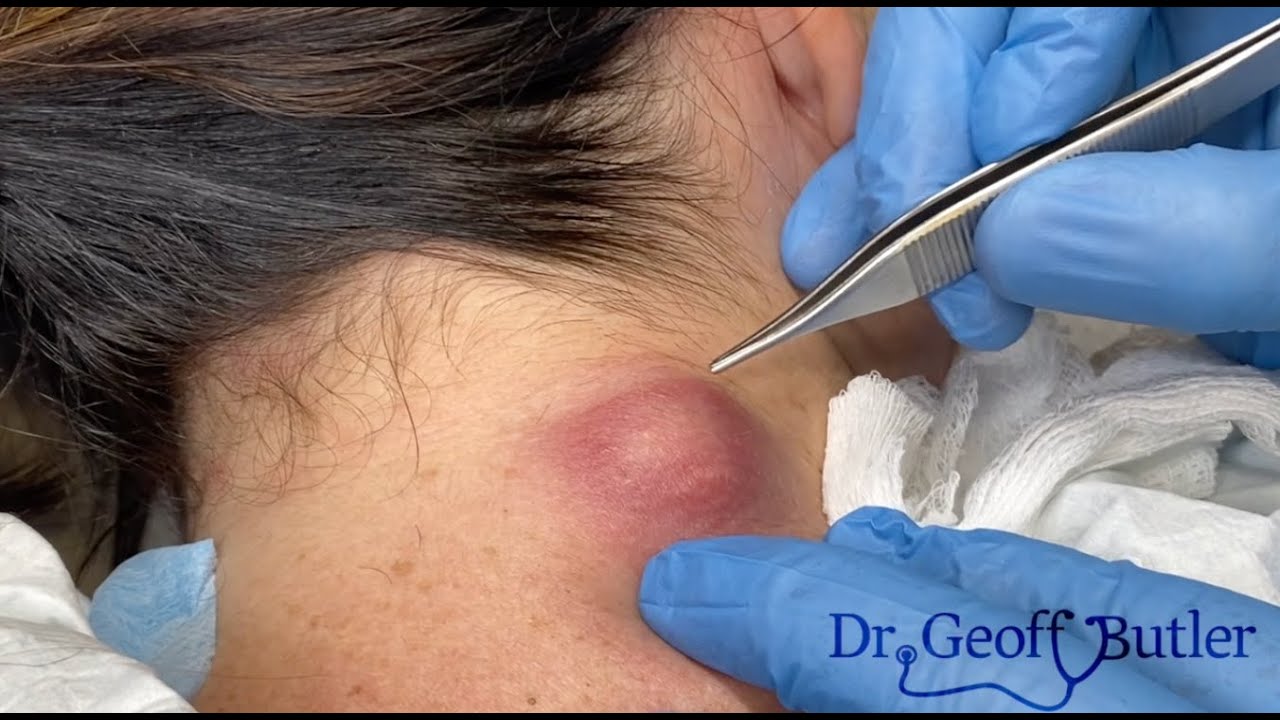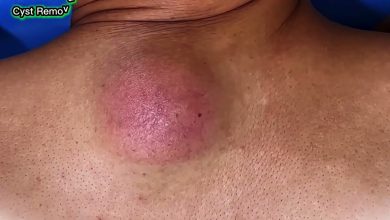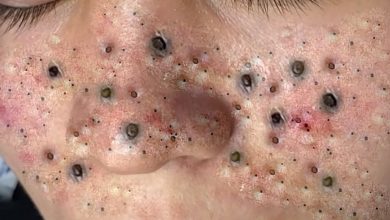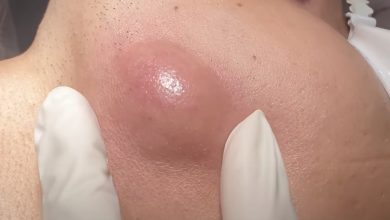How to Tackle Blackheads: Professional vs. Home Solutions
@explosionacne Blackheads removal | #blackheadsremoval #blackhead #removal #puntosnegros #satisfactorio ♬ Aesthetic – Tollan Kim
Blackheads are one of the most common skincare concerns, affecting people of all ages and skin types. They form when hair follicles get clogged with excess oil, dead skin cells, and dirt, leading to the appearance of small, dark spots on the skin, primarily on the nose, chin, and forehead. While they aren’t harmful, they can be frustrating and challenging to get rid of. Fortunately, there are numerous ways to remove blackheads—either through professional treatments or by using at-home solutions. In this article, we’ll explore both approaches to help you decide which is best for your skincare routine.
What Are Blackheads?
Before diving into treatment options, it’s important to understand what blackheads are. They are a type of acne, specifically an open comedo, where the pore is clogged but the surface remains open. The black color comes from the oxidation of the debris (oil and dead skin cells) trapped in the pore, which turns dark when exposed to air.
Professional Solutions for Blackhead Removal
If you’re dealing with persistent blackheads and nothing seems to work, professional treatments might be the way to go. Here are some of the most effective options:
1. Professional Extractions
A dermatologist or esthetician can perform manual extractions of blackheads using specialized tools. This process involves using a comedone extractor or similar instrument to carefully remove the clogged material from the pore. The benefit of professional extractions is that it’s done under sterile conditions, reducing the risk of infection or scarring.
- Pros: Fast and effective for removing stubborn blackheads.
- Cons: Can be painful if not done properly, and may cause slight redness post-treatment.
2. Chemical Peels
Chemical peels involve the application of a solution (usually containing acids like salicylic acid or glycolic acid) to exfoliate the skin, removing the outermost layers. This helps to clear blocked pores, remove dead skin cells, and reveal smoother skin.
- Pros: Effective at preventing future blackheads and improving overall skin texture.
- Cons: Can cause irritation or sensitivity, especially for those with sensitive skin.
3. Microdermabrasion
This non-invasive treatment uses tiny crystals to exfoliate the skin and remove dead skin cells. It can be effective in unclogging pores and promoting smoother skin. While it’s not a specific treatment for blackheads, it can be beneficial in reducing their appearance over time.
- Pros: Non-invasive, quick recovery time, and works on a variety of skin concerns.
- Cons: Requires multiple sessions for lasting results.
4. Laser Treatments
Laser therapy, such as the use of fractional lasers, can target the deeper layers of the skin, encouraging collagen production and reducing the appearance of blackheads. It’s also effective in preventing future breakouts.
- Pros: Long-lasting results, reduces the appearance of pores.
- Cons: Expensive and may require several treatments to see significant improvement.
At-Home Solutions for Blackhead Removal
If you prefer to treat blackheads at home or need a more affordable option, several effective methods can help you clear up your skin. Here are some popular home remedies and treatments:
1. Salicylic Acid Products
Salicylic acid is a beta hydroxy acid (BHA) that penetrates deep into the pores and helps break down the oils and dead skin cells that cause blackheads. It’s one of the most popular ingredients in over-the-counter acne products.
- Pros: Available in various forms (cleansers, toners, serums), and great for oily and acne-prone skin.
- Cons: Can be drying or irritating for sensitive skin if overused.
2. Retinoids
Retinoids, or Vitamin A derivatives, help accelerate skin turnover, meaning they encourage the shedding of dead skin cells and prevent pore blockages. Over-the-counter retinol is available, but stronger prescription versions are also an option.
- Pros: Prevents blackheads from forming, helps with overall skin texture and tone.
- Cons: Can cause dryness, peeling, and irritation, especially during the first few weeks of use.
3. Clay Masks
Clay masks are excellent for absorbing excess oil and impurities from the skin. Ingredients like bentonite and kaolin clay are commonly used to deep-clean pores and reduce the appearance of blackheads. Clay masks can be applied once or twice a week, depending on your skin type.
- Pros: Deep cleansing, helps balance oil production, and reduces the appearance of pores.
- Cons: May cause dryness, especially for those with dry or sensitive skin.
4. Pore Strips
Pore strips are adhesive strips designed to be placed on the nose or other areas affected by blackheads. After a few minutes, they are peeled off, along with the blackhead debris. While pore strips can offer instant results, they are not a long-term solution.
- Pros: Quick and easy to use, can provide visible results in minutes.
- Cons: May not remove all blackheads, and frequent use can lead to irritation or enlarged pores.
5. Exfoliating Scrubs
Using a gentle exfoliating scrub with small granules can help manually remove dead skin cells, preventing clogged pores. Opt for scrubs that contain natural exfoliants like sugar or jojoba beads to avoid skin damage.
- Pros: Easy to use, exfoliates and polishes the skin, encourages healthy skin turnover.
- Cons: Harsh scrubs can irritate the skin or cause microtears, especially for sensitive skin.
6. DIY Face Masks
Homemade face masks with ingredients like honey, lemon, or turmeric can help soothe the skin, reduce inflammation, and clear pores. For example, honey is a natural antibacterial agent, while lemon helps with oil control.
- Pros: Affordable and natural, with minimal risk of irritation when used correctly.
- Cons: May not be as effective as more targeted treatments, and results can vary.
Which Is Right for You? Professional vs. Home Solutions
The decision between professional treatments and at-home solutions depends on a variety of factors, including your skin type, budget, and the severity of your blackheads.
-
Professional treatments are ideal if you have severe blackheads that haven’t responded to over-the-counter products or if you’re looking for faster, more targeted results. However, they can be costly, and you may need multiple sessions to see significant improvement.
-
At-home solutions are more affordable and convenient, but they may require consistent use over time to achieve results. If you’re dealing with mild to moderate blackheads, home treatments like salicylic acid or retinoids can be quite effective.
Conclusion
Whether you choose professional treatments or at-home solutions, the key to tackling blackheads is consistency and proper skincare. It’s important to choose methods that are suitable for your skin type and to avoid over-exfoliating or using harsh products that can cause irritation. If in doubt, consult a dermatologist or skincare professional to determine the best approach for your unique needs. With the right treatment plan, you can achieve clear, smooth skin and keep blackheads at bay for good.





